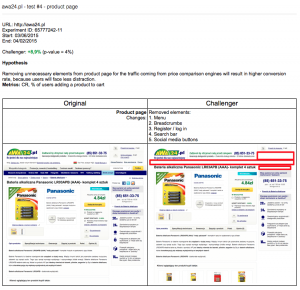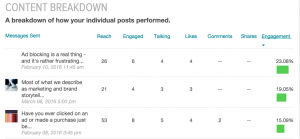
Ah, procrastination, we meet again. For all of my talk on how to improve productivity, to a certain degree I find it impossible to permanently find the answer for how to stop procrastinating.
What I can do, though, is explain why we procrastinate and give some tips to some out on top as much as possible.

There are many theories as to why we put off doing what we either want or need to do. For example, every essay I wrote during University was completed within three days from start to finish; I’m not a whiz kid, I just sucked at time management and fell prey to the procrasta-beast.
Nevertheless, I’ve once again locked horns with the demon, and I’m here to both give a little insight as to why you procrastinate, and then take that knowledge into six steps to give the habit a solid boot.
- Do the big task first
- Break large tasks into manageable chunks
- Just get started
- Eliminate potential distractions
- Have a set routine
- Remember to take breaks
Know thy enemy; Why do we procrastinate?
Although there are many theories surrounding the topic, there are two that stand out from the rest in my mind. The first (admittedly less scientific) is covered by Tim Urban in his Ted Talk earlier this year.
I first saw this in the comments of one of my productivity posts back in March (thanks Ken!), and it instantly struck a chord. Whilst not technical, it rang true; I had that very same monkey in my head which drove me off the path I needed to tread.
However, despite describing the battle between rational decision making and instant gratification, Urban avoids saying the exact cause for the monkey to take over the wheel, tell me to “research” videos for this post, and then end up at the back end of a performance called “Shia LaBeouf”.
To answer why this downward spiral starts in the first place, we need to pull on the second theory as to why we procrastinate. The “Happiness Theory” is both far more scientific, and strongly echoes Urban’s statements.
Essentially, this says that the limbic system in your brain is the instinctive part, and is focused on surviving and keeping you happy. Then there’s the prefrontal cortex, which is focused on the bigger picture, and future plans – slower to react.
The problem comes when the limbic system acts too often or too much. If your prefrontal cortex barely ever kicks in, then you’ll be left putting things off until you have a stupidly short amount of time to hit your goal.
There are a couple of ways to deal with this – first, you can meditate to encourage the prefrontal cortex to kick into gear when you need it to. Alternatively (and more broadly), try to eliminate as much stress and as many distractions as possible; the Limbic system will have less reason to kick off.
Incidentally, this is also why breaking down tasks into smaller pieces (as we’ll later discuss) works; by not posing an important issue as an insurmountable task, it’s much easier to get started on the damn thing.
It’s all well and good to say “reduce stress” and “stop procrastinating”, but realistically we all know it isn’t that simple. So, to help out, here are our six steps to stop procrastinating; when you’ve read them, put them into practice. No, it can’t wait until tomorrow.
How to stop procrastinating in 6 steps
I’ve tackled procrastination head on more times than I can count, and nothing’s ever stuck for good. However, during my travels I’ve found six principles key to coming out on top more often than not.
Don’t put this off, and don’t tiptoe around the issue. Procrastination is a tough nut to crack, but get stuck in with the following steps, and you’ll be well on your way to success.

Do your biggest task first
This was my own biggest downfall in my first attempts to improve productivity; you need to tackle your biggest tasks (or at least your most important ones) first thing in the morning. Although a fairly widespread idea, I came across it during one of our content team’s marketing calls, upon asking the rest of the team how I could improve my workflow.
It’s extremely easy to fool yourself into thinking that you need to eliminate all of your smaller tasks before focusing down on your biggest (or most difficult) task. “I won’t be able to focus as much as I need to unless I manage to clear the rest of my schedule first”, I would lie to myself.
The problem with doing this is that there is always something else that you could be doing. There will always be small tasks to busy yourself with, and there will always be consequences for doing so.
If you even manage to get around to your big task for the day, by the time you do so you’ll have lost that fresh perspective a morning mind can lend. Personally, I find that my biggest breakthroughs and surges of productivity occur just after I’ve woken up, when I’m topped up with caffeine and not fatigued by hours of work earlier in the same day.
Tips
Whilst this is an easy concept to grasp, note that it can be flexible depending on when your most productive time of day is. For example, some may work their hardest and fastest in the hours shortly before they clock off, or just after lunch. If that’s the case, then those times are when you should tackle the most difficult task you have.
Alternatively if, like me, you find that you get the most work done in the morning hours, don’t waste time on checking your emails and interacting with your social media accounts. Now is the time that you get the most done, so it’s time to get shit done.
Don’t make the same mistake I did; I procrastinated on smaller tasks to the point where I was pulling 12 hour work days just to hit the deadlines on the stuff that mattered. Dive right in, and get started – after all, it’s much easier to keep going than it is to start.
Break large tasks into manageable chunks
This is a trick I learned from my university days (although it’s admittedly a pretty widespread idea). In my haze of procrastination, I would usually be overcome by the idea of the number of words I had to write (2,000 researched words, oh my god), and so in the remaining three days until the deadline, I would have to act fast.
After the first few essays, however, I noticed that I would get better marks if I aimed to spend two days researching and planning, and then the final day writing. Rather than tackling the whole beast at once and getting lost, I broke each essay down into time spent on research, time spent planning, and then time for writing.
Procrastinators are essentially big thinkers. By examining a project as a whole, we know what needs to be done, but are at the same time completely overwhelmed by the scale of the task – it’s much easier to take care of smaller tasks that can be dealt with in one go than start up a massive project that seemingly has no end.
To combat this, it’s vitally important to break up your large tasks into smaller, manageable chunks. For example, you shouldn’t set out to “write a blog post”; first, you set aside time for researching the topic, then you spend time writing it, then you have a final chunk of time for pre-publish checks.
Breaking up your project is effective because it allows you to almost trick your mind into thinking that it is tackling a smaller task than it actually is. Smaller tasks appear easier and are much more palatable to tackle, and so this solves some of the difficulty in starting on your important tasks.
Tips
Still, a blog post is stupidly easy to break up into chunks, so let’s take something a little more difficult; an ebook. This isn’t a task which you can easily tackle without splitting it up, so to satisfy the procrastinator in me I would separate the ebook in the following tasks:
- Decide on a topic
- Research and stamp out chapters
- Research chapter one
- Plan chapter one
- Write chapter one
- Edit chapter one
- Rinse and repeat until all chapters are complete
- Format the ebook
Rather than being overwhelmed by the idea of having to create an entire ebook on your lonesome, all you need to worry about is deciding on a topic – a much more palatable task.
Just get started
As I’ve said multiple times already in this post, getting started on a task is the most important (and sometimes difficult) part. As such, sometimes the best advice for how to stop procrastinating is to just get started.

Tips
There’s a few of ways in which you can do this. First, you can just give yourself a kick up the arse and force yourself to work on a subject for at least a half hour; once you’ve gotten that first half hour under your belt, continuing isn’t nearly as much of a deal. Yes, I’m aware that the blunt advice isn’t nice to hear, but it is often the best way to solve a problem.
Alternatively, you can organize a set time to buddy up with a colleague to get shit done. This is a nicer way of forcing yourself to get started on the project, as both you and the other party have committed to a set time to work on a specific task.
One of the best ways I’ve found to do this is to use Calendly to easily carve out a time that works for both parties (especially when you work in a remote team) and then hop onto a Skype call or Google Hangouts to kickstart your project.
The final way to do this is to put your money where your mouth is, as sometimes the harshest methods get the best results. Apps that allow you to bet money on your progress, or you could give money to a trusted friend and tell them to keep it unless you hit a certain milestone by the end of the day.
Eliminate potential distractions
Procrastination is an odd beast. What works for one person may wreck the workflow of another, and so a little experimentation is part and parcel of the process to improve your productivity. This is especially true of finding the “right” kind of distractions to keep around you whilst you work.
“Surely there’s no “right” kind of distraction”, I hear you cry. Well, what I mean by that is that people perform better when exposed to different environments, and that you need to find the right one for you.

For starters though, there are a few general rules of thumb which I’ve taken from both my university days and several articles on procrastination. First, never open any social media accounts, Youtube, email accounts or anything else non-work-related unless you have either carved out a set time to reward yourself with these sites, or you absolutely have to in order to work.
These are the “wrong” kind of distractions; ones which take your attention away from the task at hand and wreck any chance of settling into your ideal workflow.
Second, try working in several different locations to see what fits you best. Although I work just fine sitting at my desk at home, on slow days I take a walk to the local coffee shop to give myself a productivity boost, just by having many other people and a low hum of noise around me at all times.
Third, if you’re working at home you need to make sure that everyone in the house knows what your work hours are. Maintaining a train of thought or workflow is hard enough alone without everyone and their mother (literally) walking in to ask you if you’ve found this, or can vacuum that. You might work at home, but that doesn’t mean that you don’t need to focus.
Tips
Now that we’ve got that out of the way, you need to experiment a little to see what background noise (if any) works for you. Personally, I find that complete silence makes me feel light my head’s stagnating, so I like to have a mix of classical music (which handily also makes the neighbors think I’m a mad scientist), but here are a couple of examples which work for many.
- Focus@Will – A tool which plays various genres of music all designed to fill blank space and boost your productivity. This is my go-to tool.
- Coffitivity – For those who find that the low murmur of a coffee shop provides just the right amount of background noise, this site has several different blends of coffee shop noise to suit your needs.
- Pomello – Whilst not strictly a noise generator, the light ticking and chimes of Pomello as it logs the time you spend on tasks is just enough to remind you that every second you’re not on task is a second wasted. Plus it integrates with your Trello board, which is always handy.
- Spotify – Although most find their favourite music to be too distracting (you should focus on the task, not the background noise), Spotify has both a number of premade “focus” playlists and the ability to play your favourite tunes to mix things up.
- myNoise.net – From “rain on a tent” to “spaceship”, this site has a huge number of noises available to suit pretty much anyone, whether you’re working or just trying to block out annoying neighbors.
- RescueTime – This app tracks the time that you spend on applications and websites, giving a report which lets you see if you’re spending too much time on a particular thing.
Have a set routine
Humans are creatures of habit, and setting yourself a daily routine to follow is the perfect way to turn your habits into the best weapon in your arsenal against procrastination. Personally, I set my own routine whilst researching our post on the topic.
The problem here is breaking your existing routine, and finding one which fits you. Nobody works to the same tune, and if you try to force yourself into a specific routine (let’s say, Ellen DeGeneres) you’ll probably do more harm than good.
Tips
To help you get your routine on track, we here at Process Street have a daily routine checklist to help you on the way to a productive day every day.
This follows the common aspects in the daily routines of successful figures such as Barack Obama and Richard Branson; rise early, get in some exercise to get your mind going, spend a little time with your family so as to not feel alienated, then get cracking with your planned day.
Once you’ve got that template, you can easily edit it to your own needs. For example, if you more follow one of my good friend Ben Brandall’s task management techniques then you’ll want to sort through your tasks either at the beginning or end of each day and decide what to do first, what to delegate to someone else, what to defer, and what to drop.
Remember to take breaks
Whilst this might sound counterproductive at first, you need to make sure that you take regular breaks in order to fight off the urge to procrastinate. The key to these breaks, however, is to make sure that they don’t get out of hand.
This is a harsh lesson gained from the basic principles of the Pomodoro Technique – although I’d read articles such as this one by Kate Barlotta, detailing how important taking a break is for productivity, I was a skeptic until our team started using Pomello.
Just by taking a five-minute break every twenty-five minutes, I noticed a cloud in my mind lifting. A quick refresh every half an hour was, in my case, just the ticket for maintaining sharp focus on the task at hand.
Tips
First up, you need to plan out your breaks in advance in order to avoid taking them early. You could use a tool like Pomello to do this (which automatically tells you when to take a break), or just set an alarm on your phone when your breaks are, and then another alarm to tell you when to work again.
One of the best ways I’ve found to space out your breaks is to take your work in two-hour chunks. Every half hour you have a five-minute break, then every two hours you take 15 minutes. Rinse and repeat until lunch, where you can have a good half hour before getting cracking again.
Second, having a break doesn’t mean going from staring at a spreadsheet to staring at cat videos or a Facebook feed. Entertaining as those may be, the whole point of a break is to give your mind a rest from what you’ve been doing for the past half hour straight.
If you work at a computer (which I’m guessing the vast majority of you do), get away from any kind of screen altogether. No phones, no gaming, no TV, no computers. Your head needs a break from staring at one thing, otherwise you’ll end up going stir crazy by lunchtime.
How to stop procrastinating? Just do it
Procrastination isn’t all bad – it can help us realize when everything’s getting to be a little too much for us, and let our minds slow down a little in order to cope. If unchecked, however, it can be a huge problem.
For all of the tips and tricks that the internet (and myself) can offer on how to stop procrastinating, the best method for general use can be summed up by a single video. Whether you’re procrastinating in your work or home life, just do it.
Have any tips for beating the procrasta-beast? I’d love to have a chat in the comments below – after all, I only found Tim Urban’s amazing Ted Talk through chatting with you guys.
Business & Finance Articles on Business 2 Community(91)
Report Post







